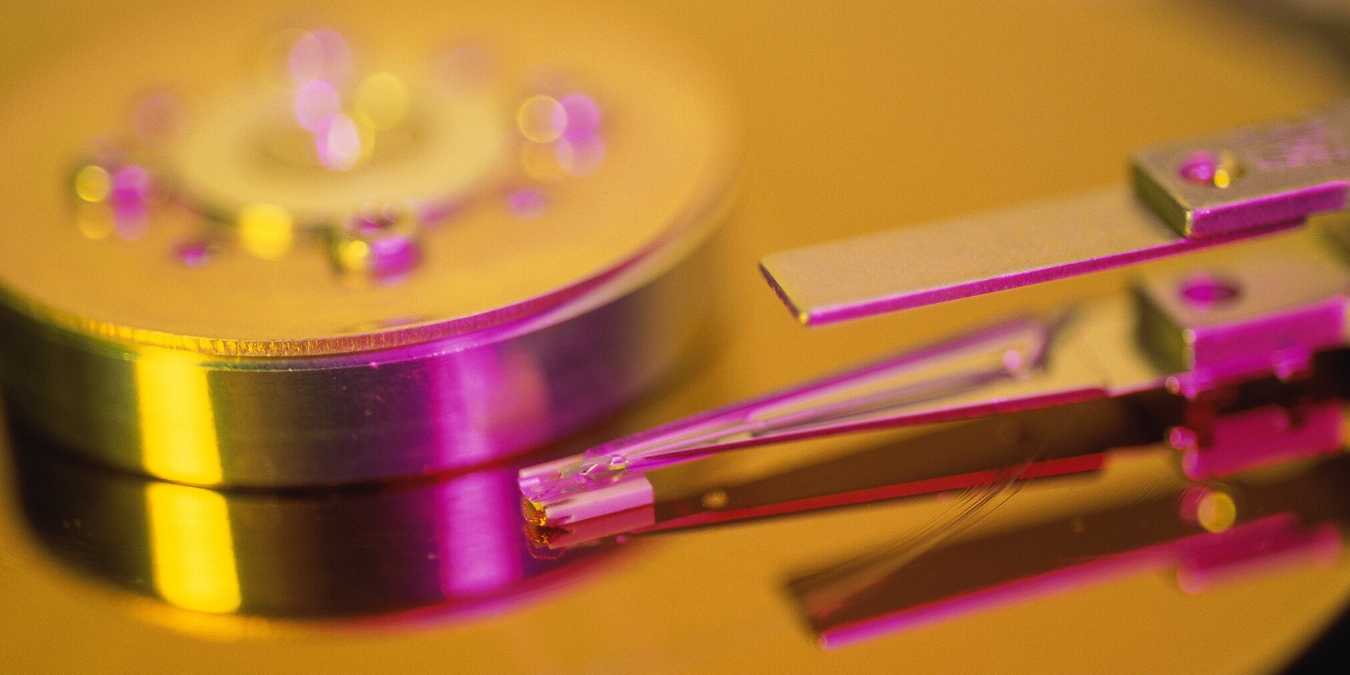
Is your hard drive beginning to fail, or are you interested in trying the new SSD drives to see what the big deal is? Follow the steps in this tutorial to change your current hard drive to SSD.
What is SSD
At its foundation, an SSD consists of some memory chips on a circuit board. They have an In/Out interface, which transfers data and feeds the power supply.
However, what makes an SSD more attractive to many users is the lack of an actuator arm that moves across the disk, reading and writing the data. There are no moving parts at all. Combine this with a speed that is nearly one-hundred times faster than an HDD, and it’s not a surprise that many people are choosing to upgrade to an SSD.
There are two types of SSD — SATA and NVMe. A SATA SSD looks very similar to most hard drives since it is enclosed in a case.
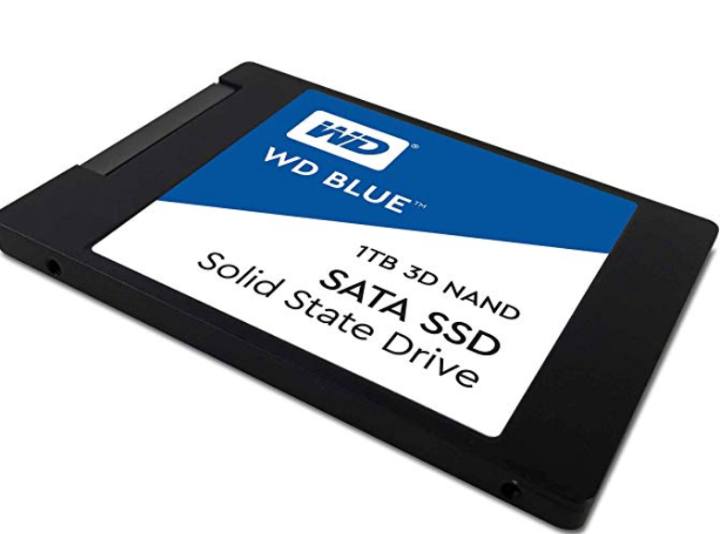
NVMe drives look more like a stick of RAM.
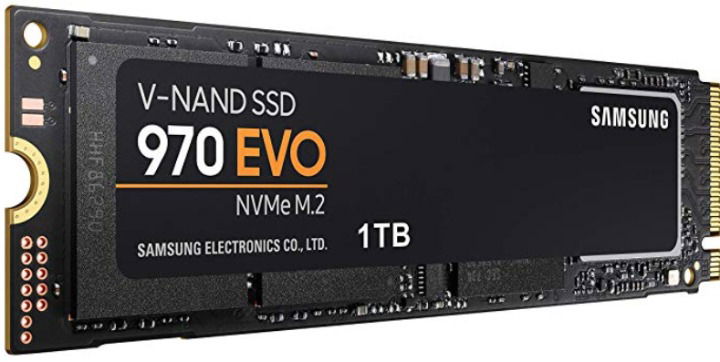
A SATA SSD uses the SATA port while the NVMe SSD uses the M2 port, which is not available in older computers.
Also read: Buying an SSD: What to Look For
Check your interface
Before you upgrade to an SSD, use the System Information in Windows 10 to see if your computer supports the SATA interface.
1. In Windows, press Win + R.
2. In the Run box, type msinfo32.
3. Press Enter or click OK.
4. When the System Information window opens, in the left window pane you’ll see a list of hardware categories. Expand Components, then Storage, and then choose IDE. Look for the type of drive in the list of specs.
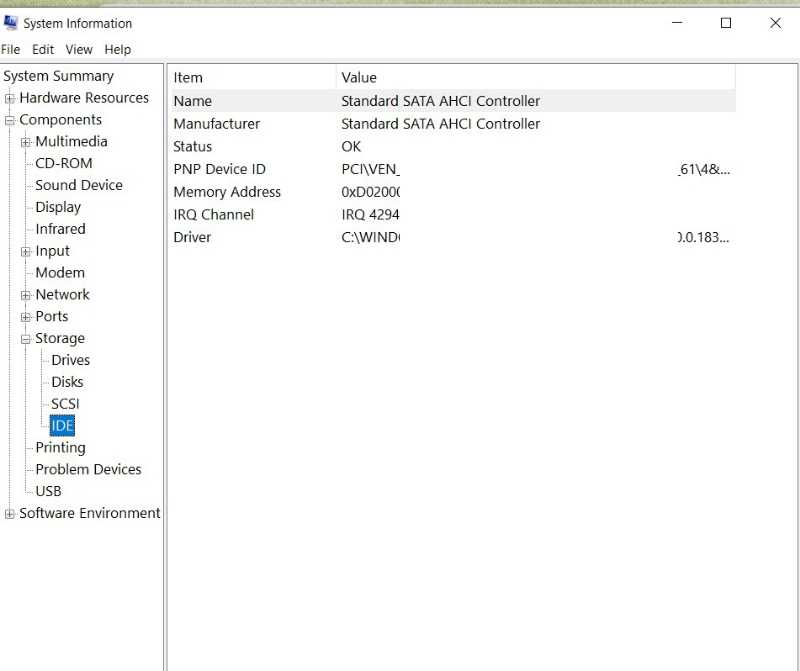
5. You can also click on Disks and search for the model number online to determine the type of storage you have.
What you need for a new SSD with a SATA connection:
- An SSD that will fit in your machine. Most HDD are 2.5 inches, but you should check the size of the HDD in your computer first. Don’t forget to verify the thickness.
- A SATA to USB adapter.
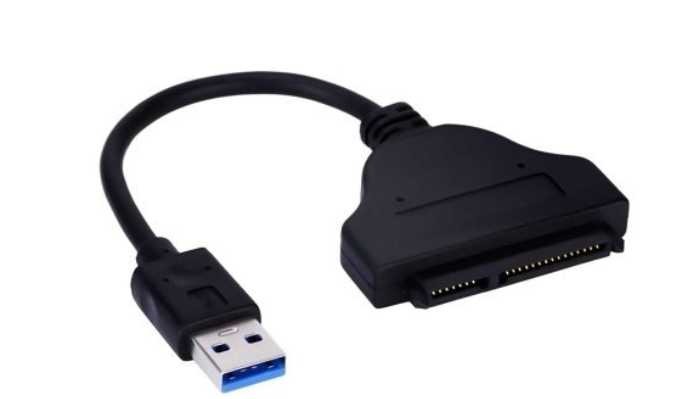
If you have an NVMe connection, you need:
- An NVMe SSD that will fit in your machine. While most M.2 drives are 22mm wide and 80mm long, some are shorter or longer. You can determine the size by looking at the four- or five-digit numbers in their names. For example, the 22mm by 80mm drives will have the number M.2 Type-2280.
- An M.2 NVME USB Adapter.
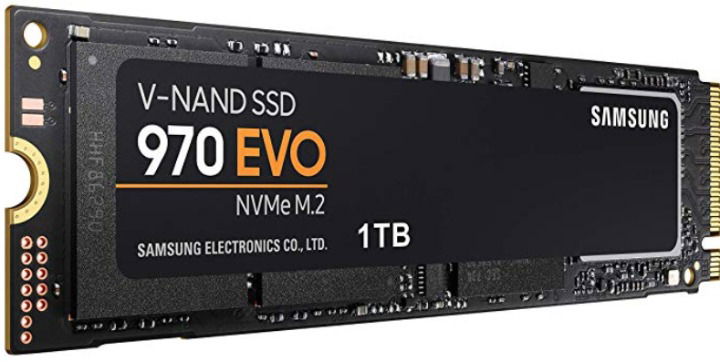
For both connections, you need a good, high-quality small-head Phillips screwdriver to disassemble your computer.
How to upgrade to an SSD Drive
The first step is to take all the information in your current hard drive and copy it over to your new drive. If you do this, your Windows OS will copy over also, eliminating any need to reinstall the Windows software.
Connect the new SSD drive to your computer using the SATA to USB (or M.2 to USB) adapter. We are going to use the MiniTool Partition Wizard to clone your current hard drive. You can use Clonezilla, too, if you prefer free and open-source software.
1. Download the MiniTool Partition Wizard, and install it to your computer.
2. Launch the program if the interface doesn’t automatically appear.
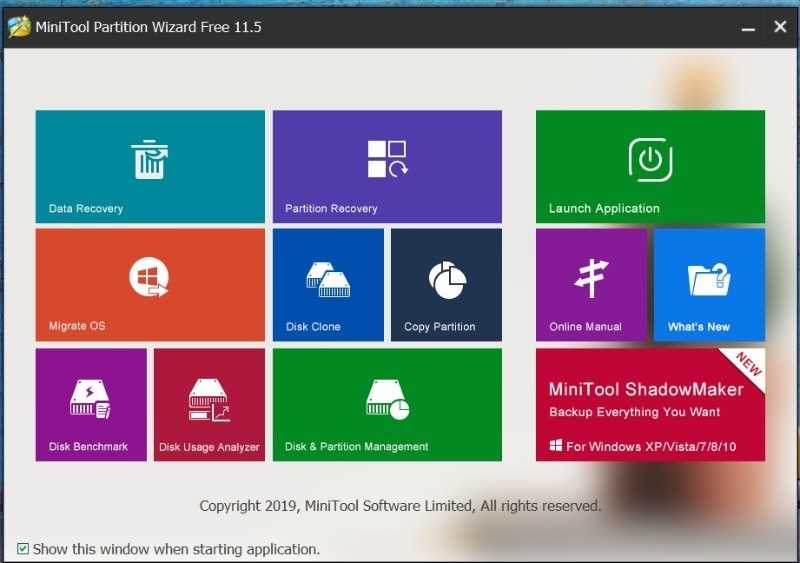
3. Choose “Disk Clone.”
4. Click Next and then select the disk to clone.
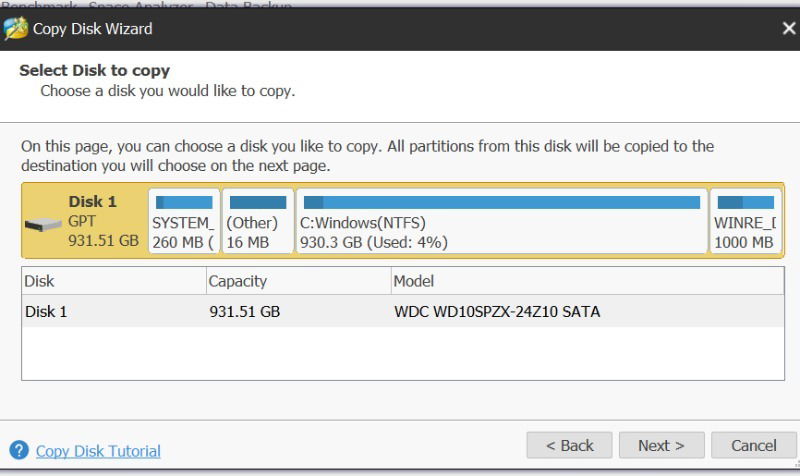
5. Click the Next button again.
6. Select the target disk where you want to clone your HDD and click Next.
7. Choose the Copy options. If your SSD is smaller than your old disk, select “Fit partitions to entire disk.” Otherwise, it is best to choose “Copy partitions without resizing.”
8. Read the popup note and click Finish.
9. Click Apply to complete the process.
Install a SATA SSD
If you are not confident that you can take your computer apart and put it back together, it’s best to get a professional to do it. To be safe, at least look up how to remove the HDD for your particular machine.
While taking the computer apart, don’t force the pieces apart. There may be screws you can’t see holding it together, and you may end up doing damage to your machine.
Also, to help with reassembly, take pictures to show where the screws belong and keep the screws somewhere where you can organize them and not lose any or forget where they go.
1. Lay the computer on a flat, non-carpeted surface.
2. Unplug the computer and press and hold the power button for a few seconds. Taking these steps will ensure no leftover charge in the machine.
3. Locate the hard drive. If you can’t tell where it is just by looking, check your device’s users’ manual to find it. Most laptops have the hard disk positioned under a removable panel, so that is what we will assume. If your HDD is hidden under the keyboard or motherboard, there are extra steps.
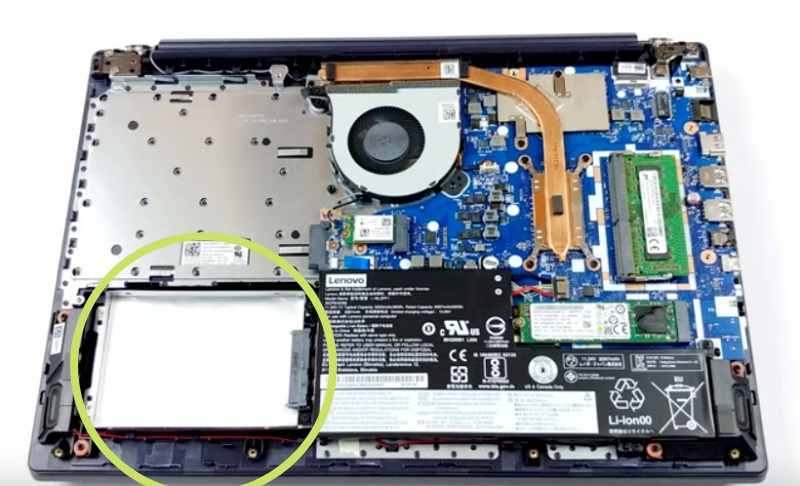
4. Use your screwdriver to remove the screws securing the removable panel on your laptop.
5. Remove the cover.
6. Remove the screws holding the HDD to your computer.
7. Loosen any other clips or cables securing the HDD.
8. Remove the drive.
9. If there is a case or cover on the drive, remove it and take out the actual hard disk.
Installing NVMe SSD
1. Locate the M.2 PCIe slot. It’s very small, only about 2cm.
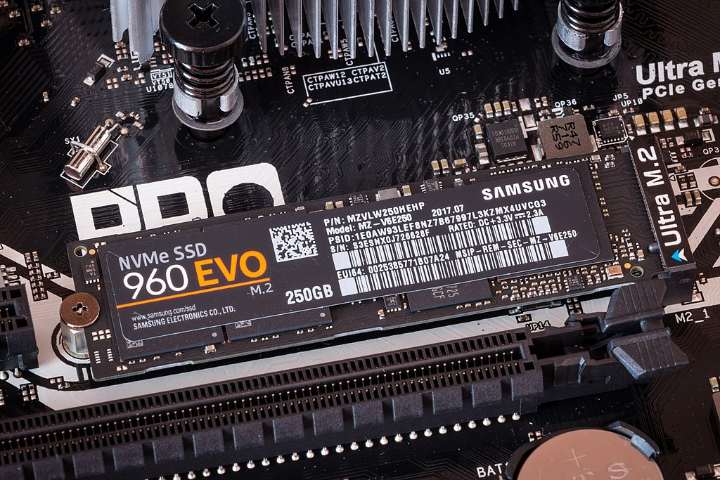
2. Install the motherboard standoff screw based on the length of your M.2 SSD drive.
3. With the standoff screw in place, gently insert the drive into the M.2 slot. Push it in at about a 30-degree angle.
4. After installation, it will sit in a raised position. This is normal.
5. Push the SSD down so that it is flush with the motherboard and sitting on the standoff mount screw.
6. Screw the SSD drive down to the motherboard standoff mount. Tighten until it’s snug but don’t over-tighten.
Once you have set the drive in place, try to boot up the computer. Since you copied your operating system along with your other information, this step should be easy.
Good luck with your new SSD! Your SSD will last longer than a standard HDD because it has no moving parts, and it will be faster!
Tracey Rosenberger spent 26 years teaching elementary students, using technology to enhance learning. Now she’s excited to share helpful technology with teachers and everyone else who sees tech as intimidating.
Subscribe to our newsletter!
Our latest tutorials delivered straight to your inbox
Sign up for all newsletters.
By signing up, you agree to our Privacy Policy and European users agree to the data transfer policy. We will not share your data and you can unsubscribe at any time. Subscribe
